Jusant is an indie game by Don't Nod, a studio known to gamers for the Life is Strange series. But this time, we are not going to see an interactive film, but a meditative adventure about a climber who, together with his aquatic companion Ballast, climbs to the top of a mysterious tower where life once bustled. The game is based on mountaineering. You will have to climb up 80% of the time, but innovations are constantly being added to this process so that you feel your own progress and want to move on. The story in the game is told through the environment, but this element is secondary. The main task of the game is to give you a sense of calm (except for the final part of the game). You just go up to the meditative music, overcome a certain area, stop, enjoy the scenery and realise how far you have already come. And it seemed how, along with the high-profile AAA blockbusters that came out in October, Jusant managed to win the player's heart? And this is the secret. DON'T NOD stands in stark contrast to other games. Indie games often strive to show something unusual, and this is their advantage. The gg editorial team climbed to the top of the tower and will share their impressions so that you can understand whether it is worth buying Jusant.
5 Reasons to Buy Jusant:
- You want to gain experience in climbing
- You have completed all the previous Don't Nod games
- Vivid visuals and calm soundtrack
- Interesting climbing mechanics that are constantly expanding throughout the game
- Your motto in life is Onward and Upward
1 Reason Not to Buy Jusant:
- You need a game with a full story
Fast forward
- The top is always worth the effort
- How to play the game
- Optimisation, visuals, and audio
- What we didn't like
- The bottom line
- 5 things to know about Jusant
The Top is Always Worth the Effort
Don't Nod decided to experiment seriously, because the games for which this studio is loved are story-oriented. Let's go back to Life is Strange. There, the gameplay is a secondary element, and Jusant turns this concept upside down. But it is worth knowing the meaning of the word Jusant to understand the history of the game. It's a French word that is a term used in certain maritime or coastal contexts and means "low tide".
In the beginning, we are shown a desert with dozens of broken ships that did not reach their destination. It's not hard to guess that there has been a massive low tide. And then an unknown wanderer appears on the screen, heading towards a mysterious tower. This wanderer is the protagonist, but what is his name, who is he, why is he here and what has he forgotten in the tower are questions that you have to find answers to yourself.
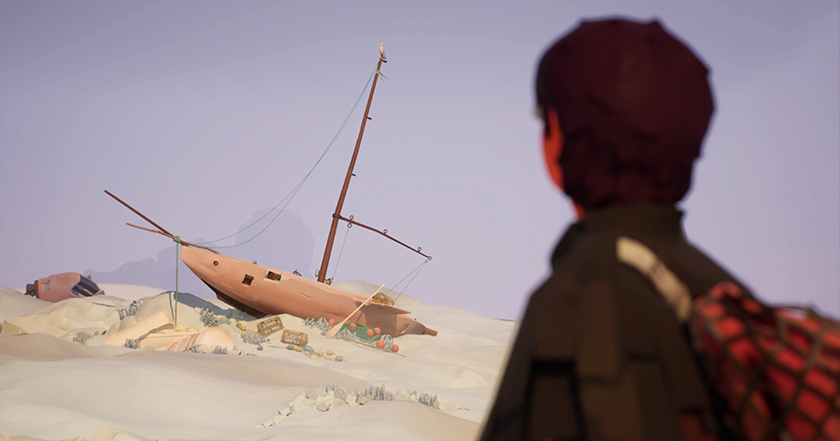
You won't hear a single dialogue during the entire 5 hours of playthrough. The whole story is told through the environment and notes. For example, we see climbing equipment, and when we find ourselves in a small village, we find a note describing how a person overcame their way. Or in a cave, we notice a cafe with a neon sign, tables and a coffee machine. We assume that the inhabitants liked to spend their time in this place. And that's how the whole walkthrough goes. That's why you shouldn't be in a hurry at Jusant. It's better to stop, look around, find interesting objects, rooms, letters, and everything that will help you better understand this mysterious place that both fascinates and does not let go.
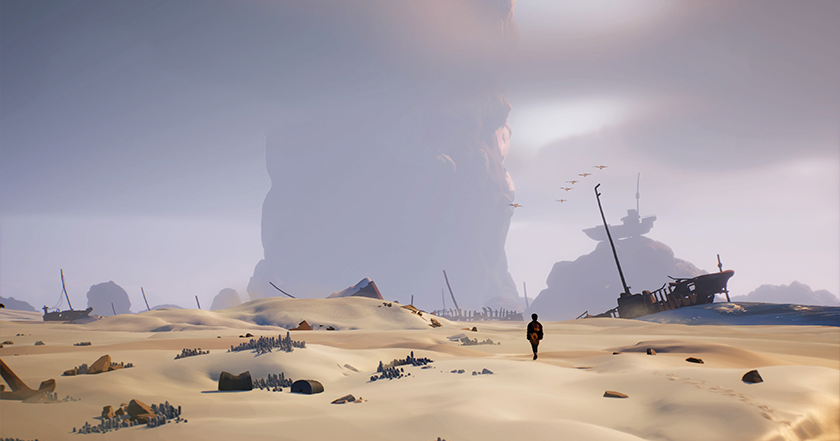
A High World to Conquer and Explore
Thanks to the aforementioned environment, the game world is alive, although we will (almost) never meet anyone along the way. You believe that there was life in the tower. There are constantly small houses that form settlements, and all of them are filled with various interior elements. You also come across windmills, fountains, murals, rails, abandoned vehicles, swings, strange giant structures and other objects that make you explore everything you can. At the same time, you constantly see birds and other small animals. Although the mysterious civilisation has disappeared, the tower has become a refuge for other creatures, which means it will always be "alive".

And the tower is constantly changing. We start at the foot, where there are mostly stones. Later we find ourselves in a place that resembles a desert. Suddenly, we are taken into picturesque caves illuminated by bioluminescence. After them, we are greeted by the top of a tower covered with grass. And that's not all the biomes and flora and fauna that awaits players at Jusant.
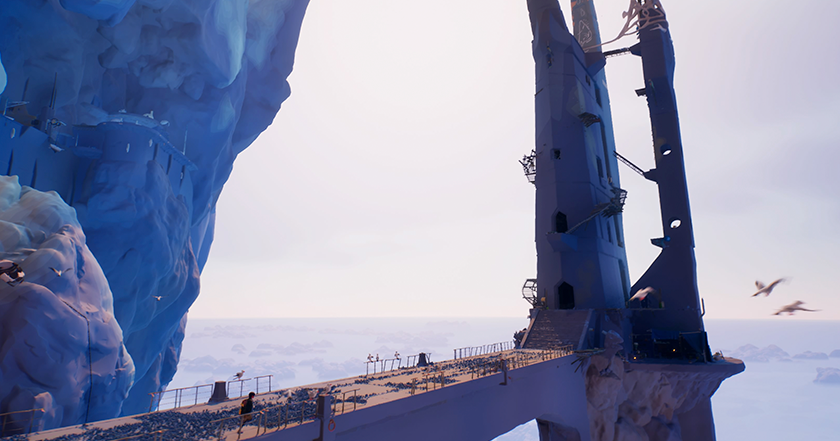
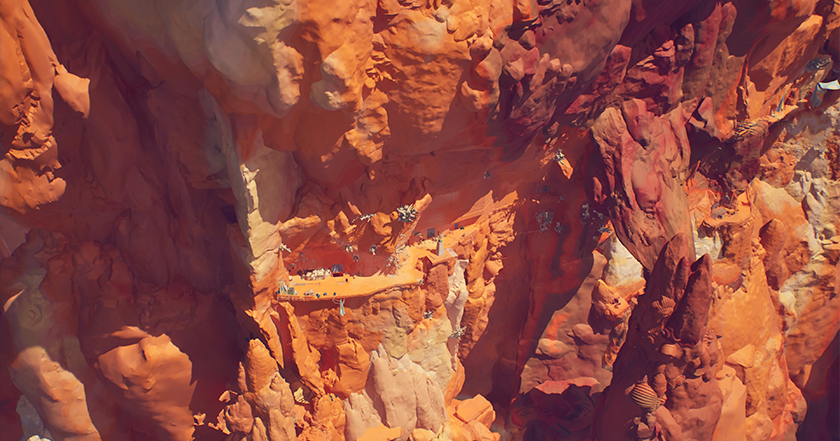
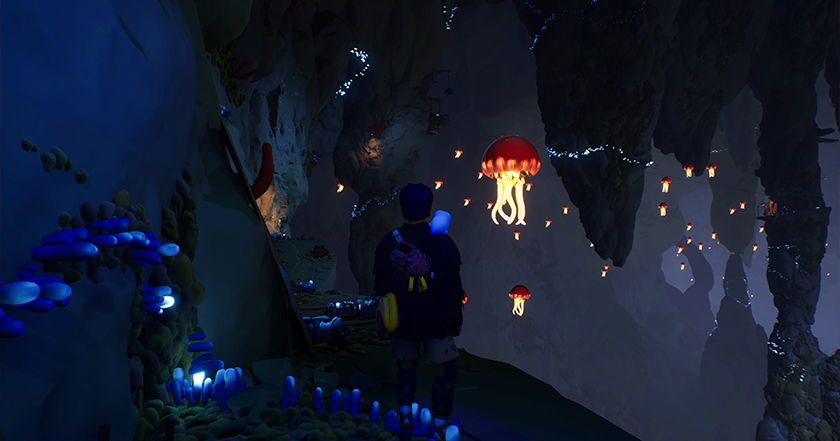
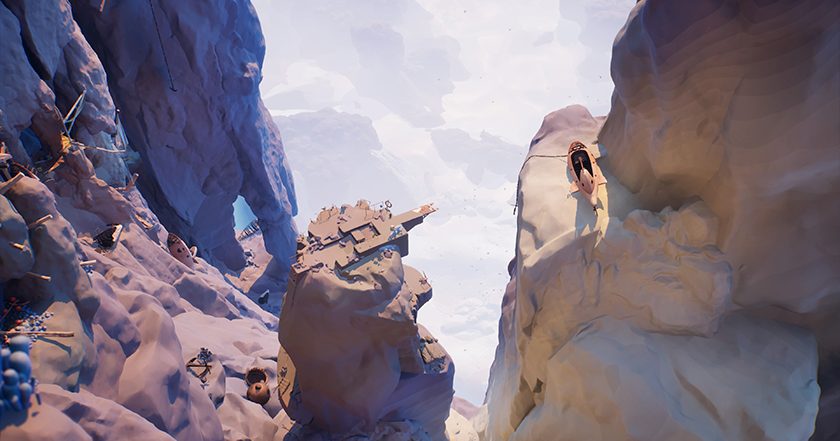
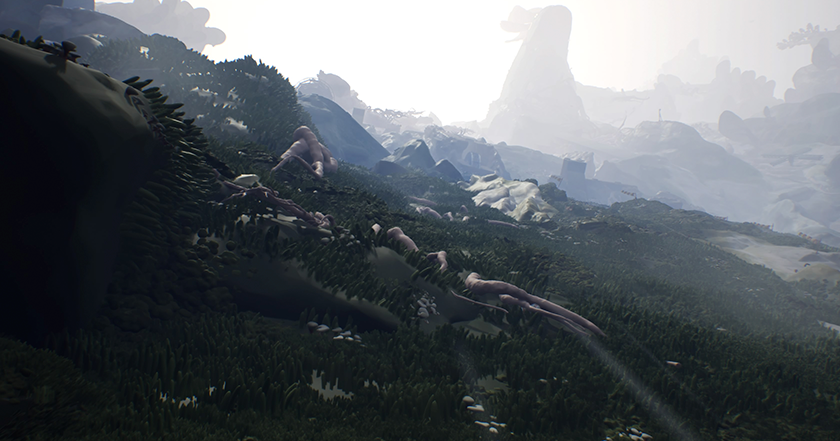
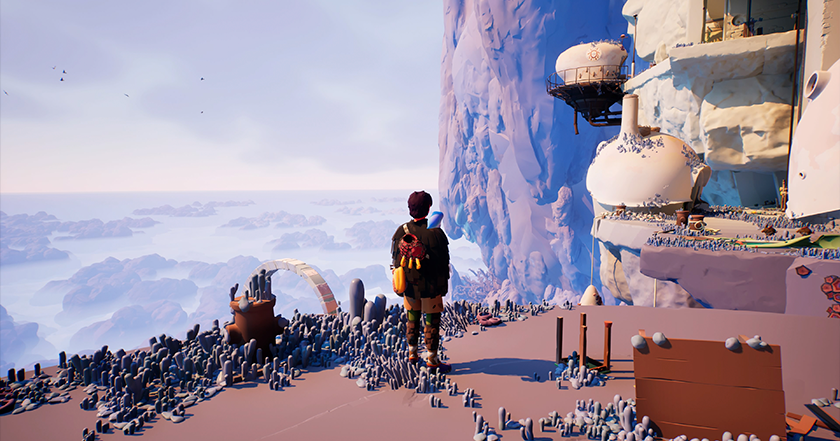






A picturesque tower
Creating a game where everything is told exclusively through the game world is not an easy task, because you need to create this world so that it always makes the player want to explore it. And this desire did not leave me until the credits rolled. Even at the first location, I started looking in all the corners in search of an answer and didn't stop until the finale. It makes me wonder how, for example, people who lived at the foot of the mountain and in caves communicated. The game shows you something new and you immediately have questions in your head: "How was it organised?" And let's look for answers. But because most locations are small, you quickly find most of the answers. I would only reduce the number of notes, but more on that later.

How to Play the Game
Jusant has an interesting implementation of climbing. For example, we have to climb 100 metres higher. We approach the mountain, the hero secures the rope, and the climb begins. In order to hold onto the ledges, you need to use L2 on the gamepad, which is responsible for the left hand, and R2, which is responsible for the right. And so we move upwards, using the two buttons and pointing the direction with the stick. If you can't reach the next ledge, you'll have to jump, but it's important to calculate everything correctly so you don't fall. If you've climbed too high and are afraid that you'll fail the manoeuvre and fall, and have to do it all over again, you can attach a safety harness. You can attach them only 4 times during one ascent.
The rope also has a limit in length, if you crawl for too long and realise that it will soon run out of length, you need to find a special attachment left by former climbers to reattach the rope, then its length will be restored. The process of climbing is shown in more detail in the video below:
But there are a few nuances. One of them is endurance. Our hero gets tired quickly, so he has to calculate the climb a few steps ahead. Of course, you can always stop and rest to recuperate, but each time the endurance scale will decrease. In order to fully restore it, you will have to get up and stand on the nearest surface.
There are also some tricks to endurance. For example, if the sun shines too brightly, the hero gets tired even faster. The situation is similar when the wind blows strongly. Therefore, there are times when you have to act very quickly.
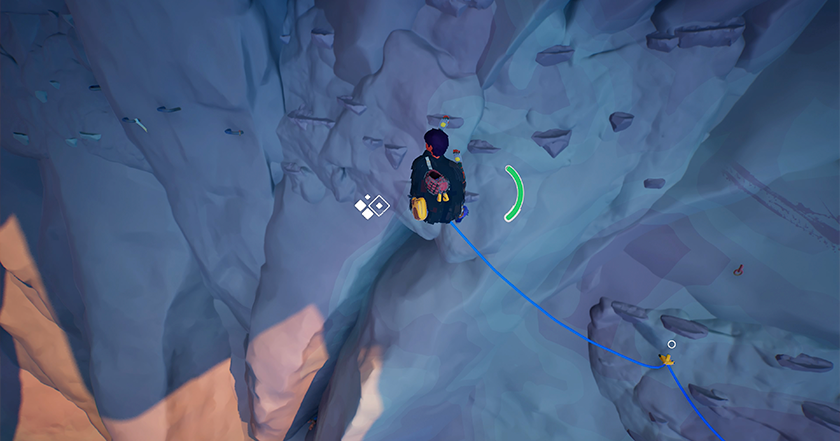
There may also come a time when it is too far to the nearest ledge, then you need to know an object to hook the rope to act as a bungee cord and fly to the next place of ascent.
We also have a water companion, Ballast, whom I mentioned at the beginning, and it's time to describe him. This creature helps a lot during the passage. For example, we are climbing and realise that there is a bare wall ahead. But next to us there is a large blue flower. We activate Ballast's ability, the flower grows, we cling to it, and calmly move on.
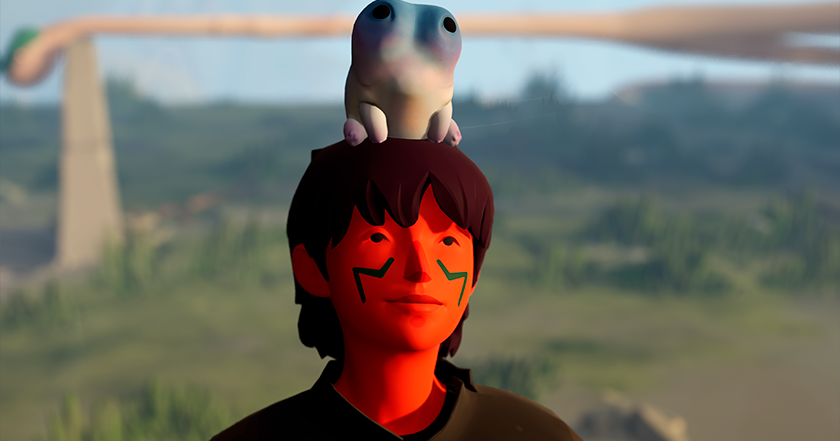
And with each new chapter, Ballast has to be used more often, and there are more and more obstacles and terrain features that will prevent you from moving on. And thanks to this, the authors have skilfully conveyed a sense of progress. At the beginning, you calmly cling to the ledges, and at the end you have to focus on the wind to make a successful jump, sometimes you have to cling to ledges that "come to life", activate Ballast's ability, analyse which route you will spend less rope on, because the game offers several ways to go through the terrain from time to time, climb to the top, exhale and enjoy the scenery to a calm melody.
Although at the end, the game is more like an action game. I would advise you to play the first chapters slowly. At the moments of ascent, you should not rush forward. Just calmly move from ledge to ledge, look at the terrain and just have fun. After all, this pace of passage helps to distract and relax from everything that happens in the real world. There is only you, the cute Ballast creature, the climber's equipment, and the path you have to travel at your own pace.
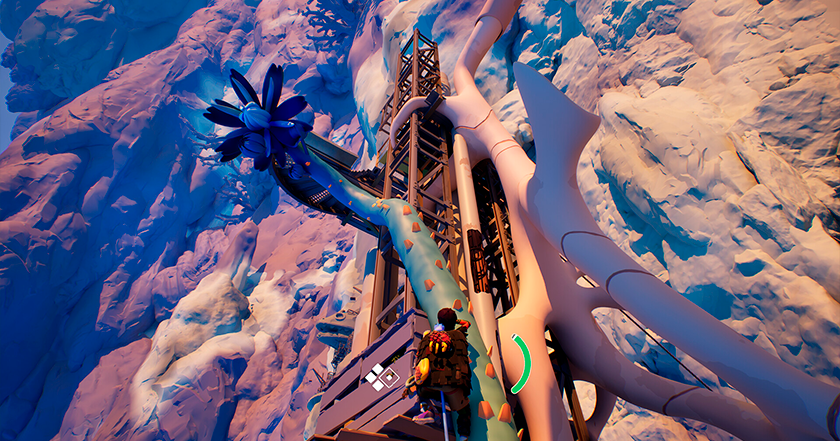
There are not many games where climbing is the basis of the gameplay. And if you start to think of a game that offers an interesting story through the environment and a meditative experience with action elements, you won't remember anything but Jusant. Therefore, Don't Nod can only be praised for such decisions.
What Else Can a Climber Do?
There are not many additional activities in the game, but they are enough for a 5-hour adventure. You can find shells that transmit sounds that are specific to the region. For example, in a cave, it will be the sounds of instruments and a kettle, and at the foot of the mountain, the sounds of the sea. At such moments, I advise you to close your eyes, so you can get a range of emotions.
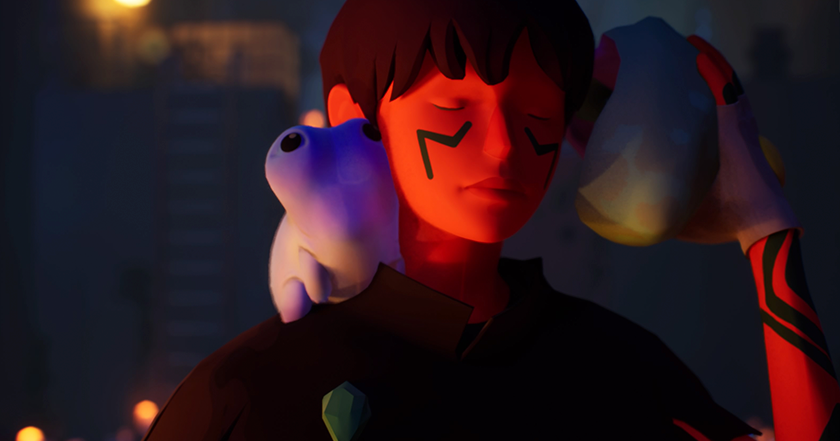
There are secret rooms with rock paintings of a mysterious civilisation. If we activate the Ballast ability near the drawing, we will receive information that was embedded in the drawing in the form of a poem. There are 12 such drawings in total, and some of them are dedicated to water.
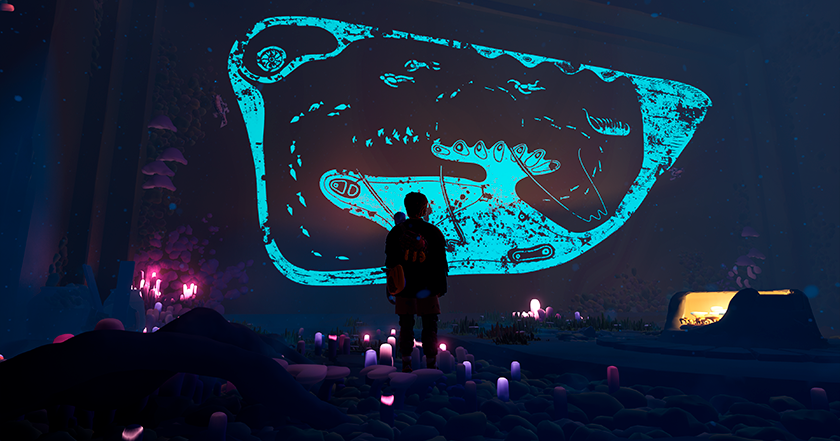
There are also small towers of stones. In the real world, they are usually used to indicate the direction of travel. If you find such a tower, you can restore it.
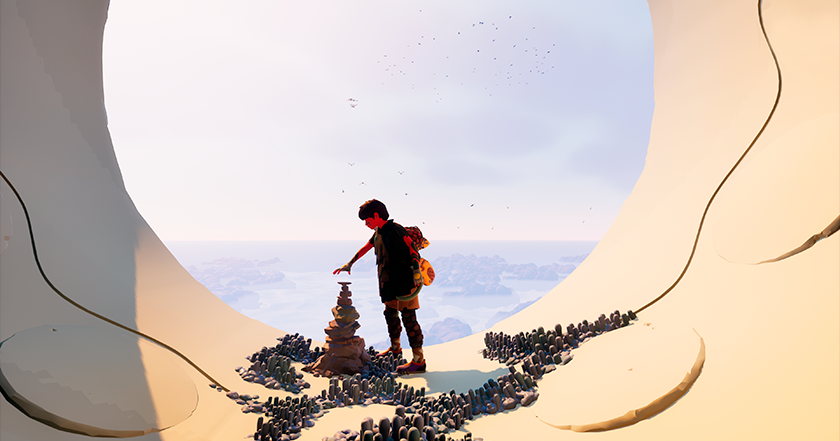
There are no serious bonuses for this, because the game has no pumping, currency, or anything like that. It is all designed to immerse you in the game even more.
Optimisation, Visuals, and Audio
I played the game on PlayStation 5, and there were no problems with optimisation. The game kept a stable 60 fps all the time. Also, the game never crashed. However, there were a few minor bugs. Twice the rope got stuck in the textures and I had to restart from a checkpoint. Five more times, the character jumped incorrectly and did not want to cling to the ledges. But considering that such situations are more of an exception, it did not cause irritation.
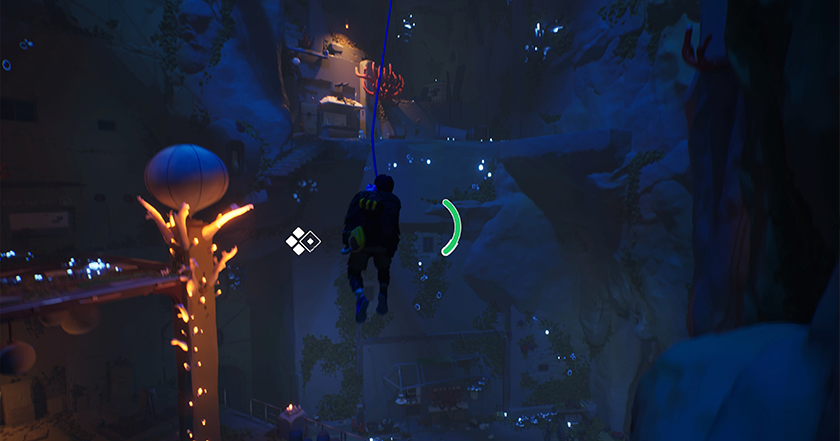
Eye-Catching Visuals
Visually, the game resembles a 3D cartoon. The picture is very nice. There are always various small details in the frame, so there is always something to see. And the colour palette is always changing. At first it is calm, then bright, and later it becomes darker, and the location with grass and wind is especially memorable. The picture is already "gloomy", and the gusts of wind constantly shake the grass, creating the feeling that you are close to the goal.
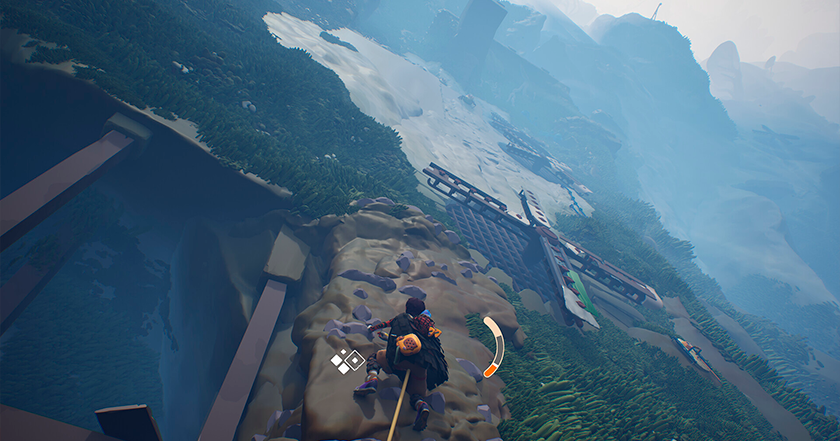

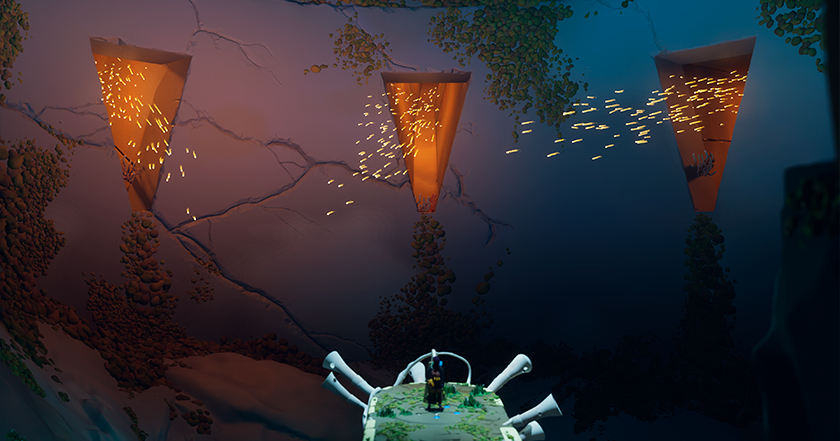
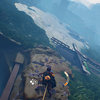

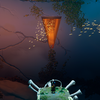
Audio Accompaniment Enhances the Feeling of a Calm Journey
In an interview, the developers said that they attach great importance to sounds and melodies. The compositions written by Guillaume Ferran are mostly calm, which vividly describes the hero's journey.
The music also reflects how the characters' relationships develop. There is a separate theme for both the climber and Ballast, as well as a theme that unites them. This shows that they complement each other.
As soon as I reached a control point and heard the melody, I just stopped for a minute. Jusant, with its calm music and picturesque landscapes, gives you a feeling of peace that is impossible to describe.
What We Didn't Like
For myself, I noted only one disadvantage - a lot of notes. Don't Nod overdid it a bit. Yes, some of them are interesting, but for a 5-hour adventure, their number could be reduced somewhat. Still, describing the story through objects and environments works much better. If the total number of notes was 20-30, you could ignore it, but there are more than 50 of them. Most of the notes are in the middle of the game, and sometimes you get tired of reading them all.
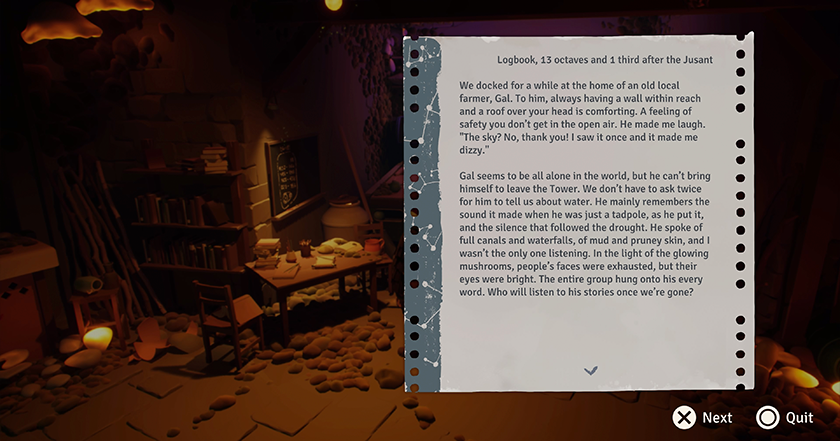
Bottom Line
Jusant is an unusual journey that personally gave me a new experience. The story of a climber who has a magical creature on his shoulder, with whom he climbs a tower, is an interesting concept that caught my attention when the demo first appeared. Christopher Nolan once said: "Don't try to understand, just feel." And this phrase can be used to describe the Don't Nod project. Even if you no longer understand the story, forget about it. The main thing is to feel the atmosphere created by the developers. The process of climbing is mostly meditative, and small action moments successfully contrast with the general mood of the game and keep you from getting bored. But what I remember most is not the process of climbing the tower itself, but the moment when you stop in between. An incredible landscape opens up in front of you, a calm and atmospheric composition plays in the background, and you feel completely at peace inside. So, the developers' experiment can be considered a success, and I will be very happy to see Jusant in the Indie Game of the Year nomination.
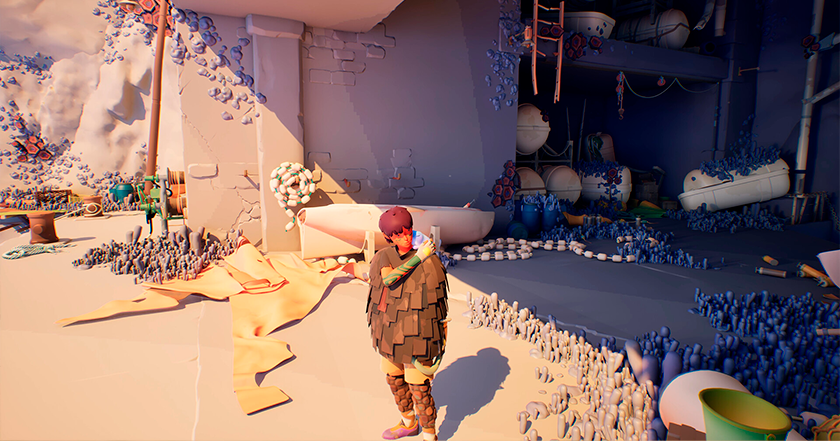
5 Things to Know about Jusant
- Jusant is an indie game created by the developers of the famous Life is Strange series
- The game is based on mountaineering, which makes it stand out from other projects
- The game has no usual plot. The story is told by the environment and notes
- Jusant skilfully gives a sense of calm through its visuals and music
- The game is available on Game Pass (PC+Xbox) from day one, so you can try Jusant for free, and you won't lose anything from it
| Jusant | |
|---|---|
| Genre. | Adventure, Puzzle |
| Platforms. | PlayStation 5, Xbox Series X|S, PC |
| Number of players | Single player |
| Developer | Don't Nod |
| Publisher | Don't Nod |
| Time to complete | 4-6 hours |
| Release date | 31st of October 2023 |
Go Deeper:
- Assassin's Creed Mirage review: Baghdad parkour with sabers
- Beetle's world inside out: Cocoon review , a brain-blowing indie puzzle game by LIMBO & INSIDE game designer
- The Cyberpunk we deserve: Impressions of Phantom Liberty - a storyline expansion for Cyberpunk 2077
- The underwater world of depression: a review of Under the Waves, an adventure game about a man's life at the bottom of the North Sea
- Suspense in a Martian mine: a review of the psychological indie game Fort Solis
The editorial team thanks Don't Nod for kindly providing the game for review
